|
A
safe method of tick removal is by the use of a
Tick Twister.
Two hooks come in the package. A large hook for the medium and
large ticks & a small hook for small and very small ticks.
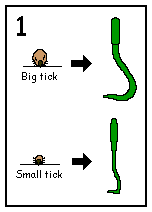
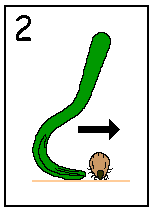
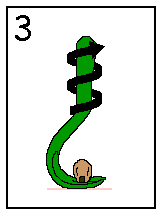
use
They are very simple to use.
Choose the most suitable hook according to
the size of the tick. Engage the hook by approaching the tick from
the side (the body of a tick is flat) until it is held. Lift the
hook very lightly and TURN IT (screwing or unscrewing). The tick
detaches by itself after 2 or 3 rotations.
tick removal on humans
The
larvae, nymphs and adult stages of the common Australian Paralysis
Tick may all attach to humans. When choosing a method of removal
one should consider tick size, tick location, strength of
attachment, patient co-operation and the transmission of
allergenic, toxic or infectious agents.
where
to purchase
Pet shops & veterinarians.
cost
$18
allergic reactions In
individuals with a history of
allergic
reactions to tick bites, ticks should be removed as soon as
possible, but only by a doctor and where resuscitation facilities
are readily available.
using
chemicals
TAGS does not
currently recommend killing adult ticks before removal by
using alcohol, methylated spirits, salt, vegetable oil, nail
polish remover or other substances as this might cause the
tick to inject more toxins and bacteria. Whilst some sources claim
that
applying insecticides such as pyrethrin/pyrethroid or
repellents such as DEET is safe and effective, TAGS does not
currently recommend doing this. TAGS does, however, condone the
use of sodium bicarbonate (bicarb soda) to help remove infestation
by multiple small larval-stage ticks.
after removal
If possible, save the tick in a sealed
jar with a leaf or blade of grass. Label with the date removed and
the locality where the tick was acquired. The tick can be
identified later if you develop illness, especially in the
following 4 weeks.
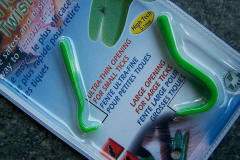
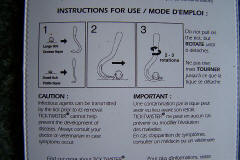
references
Tick Twister website
http://www.otom.com/
Tick Alert Group Support Inc.
http://www.tickalert.org.au/
University of Sydney and Westmead
Hospital Department of Medical Entomology
http://medent.usyd.edu.au/fact/ticks.htm
|